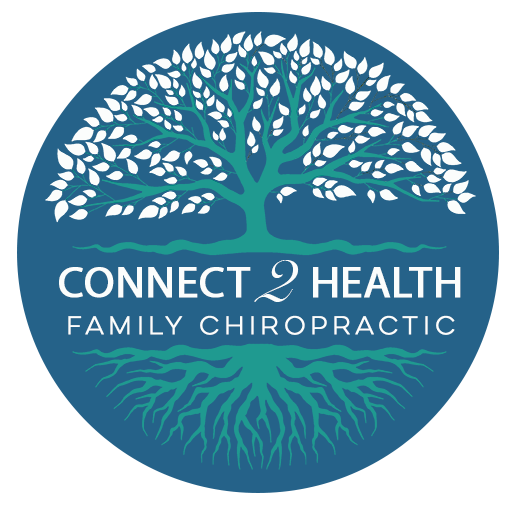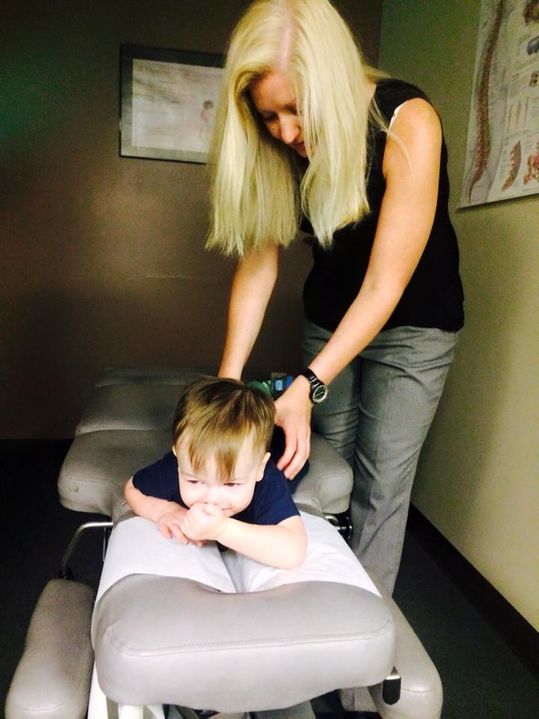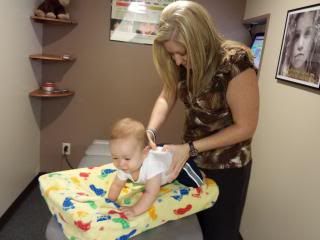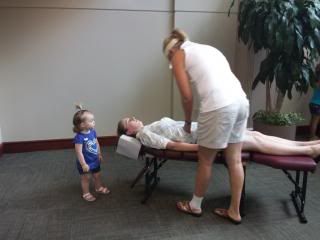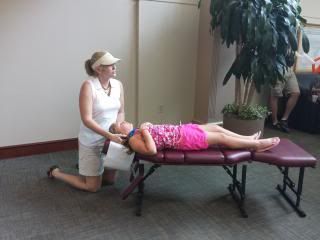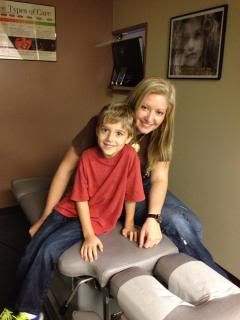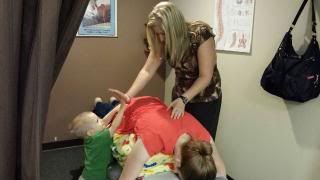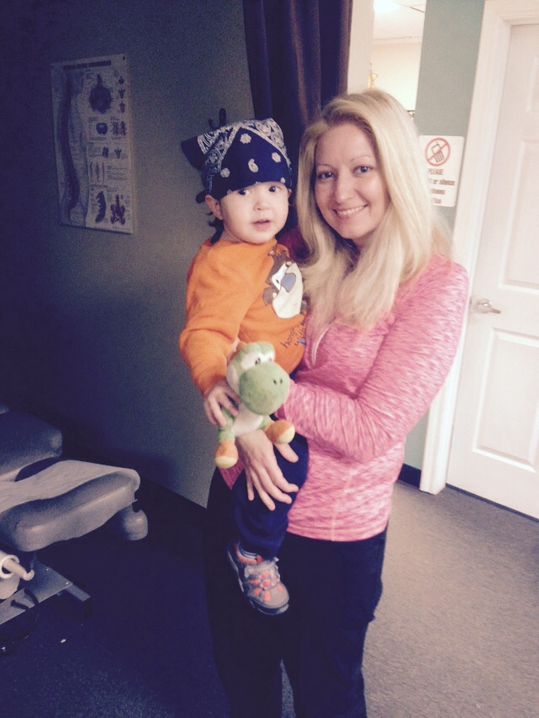
Questions that Parents frequently ask children and Chiropractic care
Why?
Children are as susceptible to trauma in their spines from various activities and events. These microtraumas can subluxate the vertebrae of the spine, placing pressure on their spinal nerves and therefore decreasing their bodies’ ability to function normally. Although symptoms, such as pain and malfunction may not show up for years, injury to their vital nervous system can have a lifetime of damaging effects.
When?
Children should be checked right after birth because of the potential damaging effects of the birth process. Even the most natural births are somewhat traumatic to the infant and may have “hidden damage.” Studies show that many children who experience symptoms of colic, ear infections and asthma have spinal subluxations impairing their nervous system function. Early detection and correction can prevent layers of damage from occurring in the child's vital nervous system. Accumulated damage will have lifelong consequences.
Does it Hurt?
Chiropractors specializing in children use very specific, gentle techniques to care for children. On the very young, the adjustment is as light as a finger touch. Doctors of Chiropractic who are members of the International Chiropractic Pediatric Association have taken postgraduate classes on specific techniques for pregnant mothers, infants and children to enhance their skills in this field.
How?
Most of the members of the International Chiropractic Pediatric Association offer consultations, giving parents the opportunity to meet them, find out about chiropractic for their families and discuss their individual needs.
(Source)Labels: Issue #06, Pathways Magazine, Chiropractic for Life
Written by Pathways Magazine
What can Chiropractic Care do for your child?
Chiropractic’s purpose is to remove interferences to the natural healing power running through the body. When that power is unleashed the healing that results may be profound.
Today we find more parents bringing their children to chiropractors for day-to-day health concerns we’re all familiar with: colds, sore throats, ear infections, fevers, colic, asthma, tonsillitis, allergies, bed-wetting, infections, pains, falls, stomach-aches, and the hundred and one little and big things children go through as they grow up.
Chiropractors Do Not Treat Disease
It’s most important to understand that chiropractic is not a treatment for disease. It’s purpose is to reduce spinal nerve stress, a serious and often painless condition most children (and adults) have in their bodies. Spinal nerve stress interferes with the proper functioning of the nervous system, can weaken internal organs and organ systems, lower resistance, reduce healing potential and set the stage for sickness and disorders of all kinds.
When a chiropractor frees the nervous system from spinal stress, the healing power of the body is unleashed: the immune system functions more efficiently, resistance to disease increases, and your child’s body functions more efficiently. Your child can respond to internal and external environmental stresses such as germs, changes in temperature, humidity, toxins, pollen and all the other stresses he/she comes in contact with more efficiently.
So although children with diseases are often brought to the chiropractor, the chiropractor is not treating their diseases but is instead freeing them of spinal nerve stress, thus permitting their body’s natural healing potential to function at its best.
What Exactly Is Nerve Stress?
Spinal nerve stress (also referred to as vertebral subluxations, the subluxation complex, or “pinched nerves”) is a misalignment or distortion of the spinal column, skull, hips, and related tissues (the structural system) that irritate, stretch, impinge or otherwise interfere with the proper function of the nervous system (brain, spinal cord, spinal nerves and outlying or peripheral nerves). Since the nervous system controls the function of the body, any interference to it can have wide-ranging effects.
How Is Spinal Stress Caused?
Spinal nerve stress can be caused by physical, chemical and/or emotional stress. Physical stress may start in the womb, with the baby lying in a distorted or twisted manner. Spinal nerve stress in newborns is more common than previously realized. This may be caused by a traumatic or difficult birth which can introduce great stress to the infant’s skull, spinal column and pelvis. Throughout childhood, the normal childhood traumas every child experiences can be a source of spinal and cranial trauma. Most of the time, the pain from the initial injury “goes away” however the damage incurred continues to affect the future function of the child’s nerve system.
How Does the Chiropractor Reduce Spinal Nerve Stress?
This is accomplished first by analyzing the spinal column and related structures for balance and proper function. Where the spinal column is found to be functioning improperly, the Doctor of Chiropractic performs precise corrective procedures called spinal adjustments.
Using his/her hands and/or specialized instruments to gently and specifically correct those abnormal areas, the spine and cranium regain their intended state of balance and the nerve system is freed from stress.
It’s All About Function!
Today’s parents are more concerned than ever about the adverse effects drugs have on their children. Parents are increasingly asking, when handed a prescription for a child’s recurrent problem, “Is this really all I can do for my child? Is there a safer alternative?”
Parents are hesitant to merely mask symptoms with drugs and are worried about side effects. Their desire to achieve a state of true health—has led parents to seek health care options which support their children’s own natural ability to be healthy.
Chiropractic care is one such option. All children function better with 100% nerve function. All children deserve the right to express their fullest potential. Chiropractic care for children is safe, gentle and effective. It allows for the opportunity for maximum potential for well-being.
Source: Labels: Issue #04, Pathways Magazine, Chiropractic for Life
Written by Pathways Magazine
